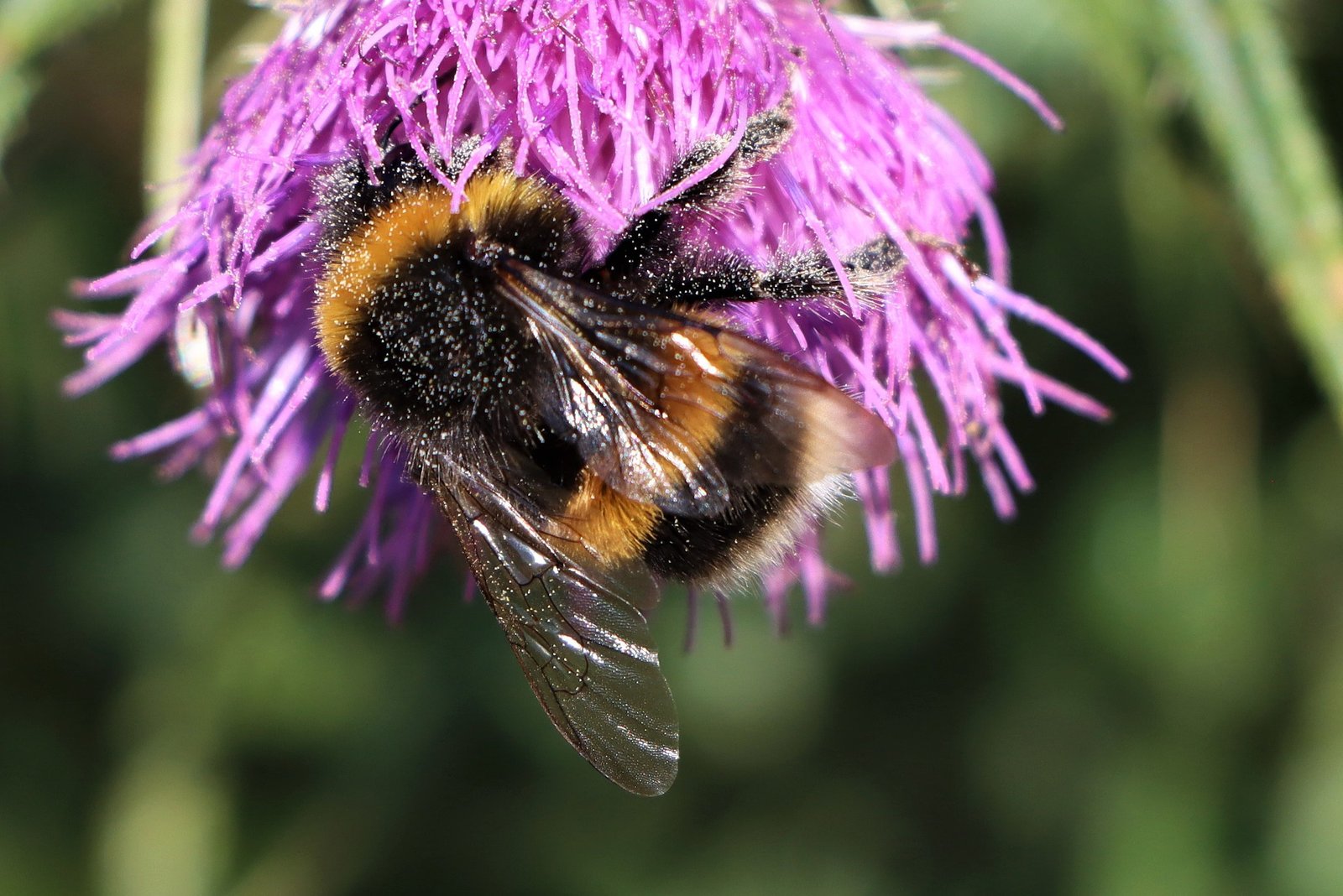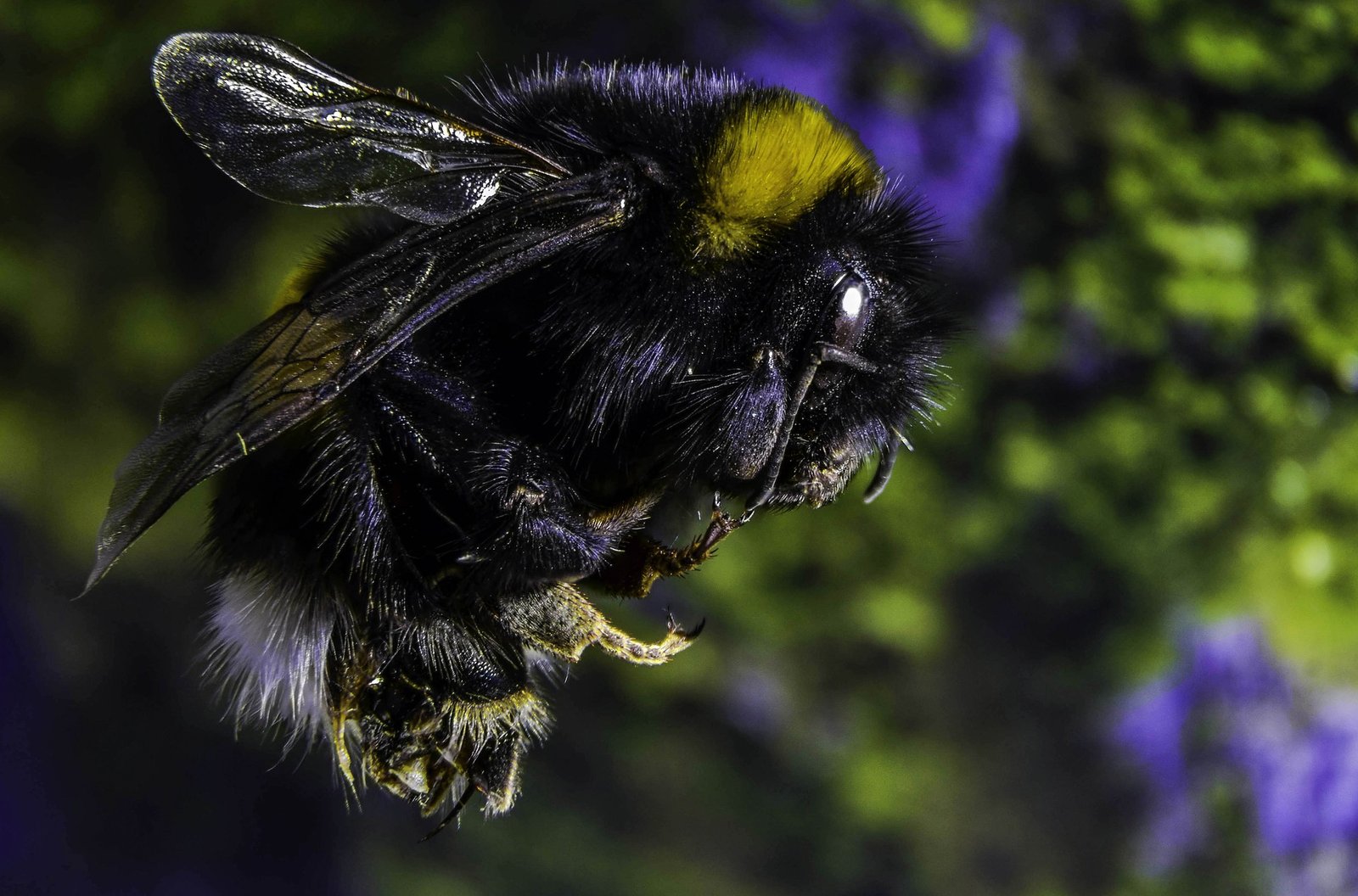Bumble Bees: Bombus Pensylvanicus

Description Of Bumble Bees
Bumblebees are easily recognized, with black and yellow or orangish hair patterns on their abdominals being large (3/4 inch long). On their hind legs, the queens and workers have pollen baskets. Due to the presence of orange or yellow hair patterns on the upper surface of the honey bee’s abdomen, bumblebees can be distinguished from carpenter bees. Some of the genus bumble bees, Psithyrus (subfamily Bombinae), are parasites of larvae-feeding bumble bees. 1Go To Source texasinsects.tamu.edu -“Bumble Bee”
Learn More: Insect Species With Painful Stingers
Bumble Bee Size
Bumblebees are larger and generate more heat than honey bees. It helps them to operate during cooler weather. Bumble bee size ranges from:
- Length: 11-17 mm (Worker), 20-23 mm (Queen)
- Wingspan: 22-34 mm (Worker), 38-43 mm (Queen)
Behavior Of Bumble Bees

Bumblebees are social and colonial species that form large colonies. Bumblebee queens live with their offspring, both male and female. During the day, older generations forage for pollen, while younger generations take care of the brood. While the bees forage, they simultaneously pollinate the plants they are extracting nectar from. To feed the colony, pollen and saliva are combined in the nest to produce honey. Male bees do no work.
Bumble Bee Communication
Bumble bee communication methods include touch, vision, chemicals called pheromones, and wing vibrations. The bees talk about the nest’s safety, where the food is, and what they should do. Bumblebees, like other bees, are able to see ultraviolet light. 2Go To Source animaldiversity.org -“Bombus”
Reproduction Cycle Of Bumble Bees
A colony’s queen bee is a mother to all bees. The queen finds food after waking from hibernation and looks for a nest in a good location. She lays her eggs after the nest is found and stores food for herself and the babies.
For approximately two weeks, the queen sits on the eggs to keep them warm. When the eggs hatch, the queen is responsible for feeding pollen to the larvae (baby bumble bees). The larvae spin cocoons around themselves at two weeks old and stay there until they develop into adult bees.
The queen only takes care of the babies in the first batch. The first batch will grow into worker bees that can clean and protect the nest, forage for food, and take care of the next batch of baby bees. Nothing but laying and hatching new eggs is left to the queen to do.
Drones (males) and prospective queen bees are bees born in late summer. As soon as they are mature, both leave the nest. The males from other nests mate and then die with future queens. The future queens fatten themselves up after mating and hibernate throughout the winter. 3Go To Source livescience.com -“Facts About Bumblebees”
Bumble Bee Habitat

Among bumblebee species, nest sites vary. The more common species prefer dry and dark cavities for nesting.
Some bumblebee species nest underground, under sheds, in compost heaps, and abandoned rodent holes. Some make nests in thick grass, while others make nests in bird boxes, lofts, and trees. It is common to see swarms of bumblebees flying around a nesting location. This is perfectly normal, and these are male bees that fly around nests often, waiting for queens to come out to mate.
The queen will investigate the environment using both sight and smell when searching for a nest. She will research by going into the hole when she discovers a potentially appropriate site. If the site is unfavorable, she will continue searching until a nest site is found. In spring, the low-flying zig-zag flight of a nest-site searching queen can be seen. 4Go To Source bumblebeeconservation.org -“Bumblebee nests”
North American Bumble Bee Range & Distribution
In the eastern U.S. and Great Plains regions, across the central U.S. and extreme southern Canada, Bombus pensylvanicus is widespread. It is found in the Desert West and adjacent areas of California and Oregon, though absent from much of the Mountain West.
Diet Of The Bumble Bee
Such insects feed exclusively on plant nectar. This species of bee will use a long tongue called a proboscis in order to reach the nectar. Certain species will specialize in feeding on specific plants. In contrast, certain species are generalists and feed on almost any species of plants.
Scientists call this a relationship of mutuality because as they feed, the bees collect pollen from the flowers and spread the pollen to other flowers. The dissemination of pollen supports the pollination and reproduction of plants. 5Go To Source animals.net -“Bumblebee”
Predators Of The Bumblebee
Most bumblebees are killed by parasites rather than by predators. This may be because the bumblebee females are armed with a stinger, but it is also due to the protection provided by their coloration warning.
Some crab spiders embroider flowers with bumblebees. These spiders are not web spinners but sit and wait to get their prey within reach. They are camouflaged well, making it easy for the spiders to capture bumblebees in North America as they land on flowers.
Robber flies catch their prey with their legs on the wing. And they have been found to be preying on bumble bees in North America. A few bird species, such as bee-eaters, spotted flycatchers, tits, and shrikes, can remove the sting before eating the bumble bee. 6Go To Source bumblebee.org -“Predators of bumblebees”
Bumble Bee Conservation

Many bumblebee species are declining, like most other native pollinators, which is profoundly worrying because of their essential role in nature and agriculture. As species of conservation concern, at least two bumblebee species have been listed:
The yellow bumblebee also known as the golden northern bumblebee (Bombus fervidus), is listed as critically imperiled, meaning that it is in danger of being extirpated from within our borders.
The rusty belt bumblebee also called the rusty-patched bumblebee (Bombus affinis), has been placed on the endangered species’ federal list. It is a key wildflower pollinator is called Dutchman’s Breeches (Dicentra cucullaria), whose strangely shaped flowers are difficult for other bees to pollinate. 7Go To Source nature.mdc.mo.gov -“BUMBLE BEES Bombus spp.”
Bumblebee Species In The United States
In the United States, there are 49 species of bumblebees, which can be separated into three different proboscides (tongue) length classes: short, medium, and long. This variation in the tongue’s size allows different bee species to visit flowers of different sizes and shapes.
However, a few short-tongued species by “nectar robbing” manage to feed on long-tube flowers. They bite holes near the nectaries in the flowers and extract the nectar through the hole instead of “legitimately” visiting the flowers. 8Go To Source fs.fed.us -“Bumblebees (Bombus spp.)”
Sources:
- “Bumble Bee.” Texas A&M AgriLife Extension, Texas A&M University, texasinsects.tamu.edu/hymenoptera/bumble-bee. Accessed 8 Feb. 2021.
- Hauze, D. 2020. “Bombus” (On-line), Animal Diversity Web. Accessed February 08, 2021 at https://animaldiversity.org/accounts/Bombus/
- Bradford, Alina. “Facts About Bumblebees.” Livescience.Com, Future US, 14 Jan. 2017, www.livescience.com/57509-bumblebee-facts.html.
- “Bumblebee Nests – Bumblebee Conservation Trust.” Bumblebee Conservation Trust, Bumblebee Conservation Trust, www.bumblebeeconservation.org/bumblebee-nests. Accessed 8 Feb. 2021.
- Oldham, Cydni. “Bumblebee.” Animals Network, Animals.NET, 8 Jan. 2019, animals.net/bumblebee.
- Smith, Laura. “Bumblebee Predators.” Bumblebee, Bumblebee.org, www.bumblebee.org/PREDATORS.htm. Accessed 8 Feb. 2021.
- “Bumble Bees.” MDC Discover Nature, State Of Missouri, nature.mdc.mo.gov/discover-nature/field-guide/bumble-bees. Accessed 8 Feb. 2021.
- Inouye, David. “Bumblebees.” U.S. Forest Service, University of Maryland, www.fs.fed.us/wildflowers/pollinators/pollinator-of-the-month/bumblebees.shtml. Accessed 8 Feb. 2021.
